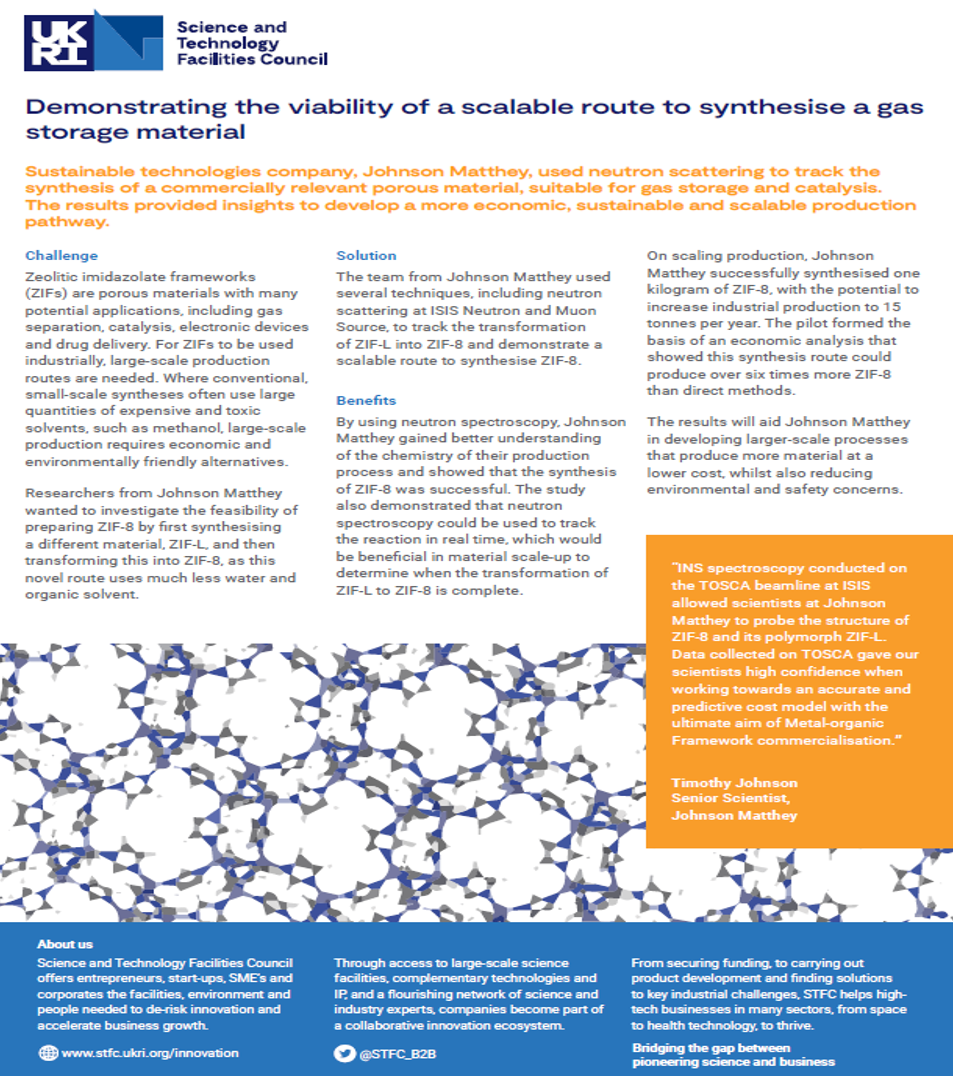Sustainable technologies company,
Johnson Matthey, used neutron scattering to track the synthesis of a commercially relevant porous material, suitable for gas storage and catalysis. The results provided insights to develop a more economic, sustainable and scalable production pathway.

Zeolitic imidazolate frameworks (ZIFs) are porous materials with many potential applications, including gas separation, catalysis, electronic devices and drug delivery. For ZIFs to be used industrially, large-scale production routes are needed. Where conventional, small-scale syntheses often use large quantities of expensive and toxic solvents, such as methanol, large-scale production requires economic and environmentally friendly alternatives.
Researchers from Johnson Matthey wanted to investigate the feasibility of preparing ZIF-8 by first synthesising a different material, ZIF-L, and then transforming this into ZIF-8, as this novel route uses much less water and organic solvent. The team used several techniques, including neutron scattering at ISIS Neutron and Muon Source, to track the transformation of ZIF-L into ZIF-8 and demonstrate a scalable route to synthesise ZIF-8.
Download case study
By using neutron spectroscopy, Johnson Matthey gained better understanding of the chemistry of their production process and showed that the synthesis of ZIF-8 was successful. The study also demonstrated that neutron spectroscopy could be used to track the reaction in real time, which would be beneficial in material scale-up to determine when the transformation of ZIF-L to ZIF-8 is complete.
On scaling production, Johnson Matthey successfully synthesised one kilogram of ZIF-8, with the potential to increase industrial production to 15 tonnes per year. The pilot formed the basis of an economic analysis that showed this synthesis route could produce over six times more ZIF-8 than direct methods.
The results will aid Johnson Matthey in developing larger-scale processes that produce more material at a lower cost, whilst also reducing environmental and safety concerns.
“INS spectroscopy conducted on the TOSCA beamline at ISIS allowed scientists at Johnson Matthey to probe the structure of ZIF-8 and its polymorph ZIF-L. Data collected on TOSCA gave our scientists high confidence when working towards an accurate and predictive cost model with the ultimate aim of Metal-organic Framework commercialisation.”
Timothy Johnson, Senior Scientist, Johnson Matthey
